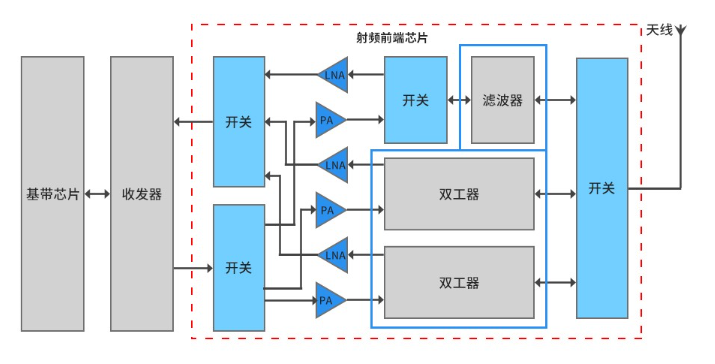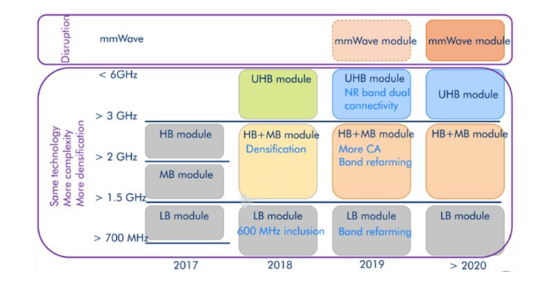|
The OP
Published on 2020-7-6 22:22
Only look at the author
This post is from RF/Wirelessly
Latest reply | ||
|
Personal signature
射频【放大器】 |
||
|
2
Published on 2020-7-7 09:01
Only look at the author
| |
|
|
|
|
|
|
alan000345
Currently offline
|
3
Published on 2020-7-7 20:59
Only look at the author
|
|
|
|
|
|
This post is from RF/Wirelessly
| ||
|
|
||
|
|
|
5
Published on 2020-7-9 20:48
Only look at the author
This post is from RF/Wirelessly
Comments | ||
|
Personal signature
默认摸鱼,再摸鱼。2022、9、28 |
||
|
|
This post is from RF/Wirelessly
Comments | ||
|
Personal signature
射频【放大器】 |
||
|
|
|
7
Published on 2020-7-11 15:20
Only look at the author
This post is from RF/Wirelessly
Comments | ||
|
Personal signature
默认摸鱼,再摸鱼。2022、9、28 |
||
|
|
This post is from RF/Wirelessly
| ||
|
Personal signature
射频【放大器】 |
||
|
|
- 【Posts】A picture shows the layout of Qorvo and domestic replacement-penetration in various fields
- 【Posts】Share a picture of domestic alternative power IC
- 【Posts】This is the whole radio frequency microwave system in one picture. Just follow this to get started.
- 【Posts】[Help] Issues with replacing domestically produced switch chips!!!
- 【Posts】Regarding the low power consumption problem of the domestic MCU HC32L110, please give me some advice.
- 【Posts】Many domestic chips now replace the STM series chips, which looks good in the short term. What do you think?
- 【Posts】A picture shows the layout of Qorvo and domestic replacement-penetration in various fields
- 【Posts】This is the whole radio frequency microwave system in one picture. Just follow this to get started.
-
Share a picture of domestic alternative power IC
ApictureofdomesticalternativepowerIC
-
Award Ceremony: Vicor Watch the \"PCB Layout and Thermal Design of High-Density Power Systems\" Power Seminar and Win a Prize
Eventdetails:Clickheretoviewthevalidityperiodoftheprizecollection:FromnowuntilJune30thPrizecollectionmethod:PleaseclickheretofillintherelevantinformationfortheprizecollectionNote:(1)Ifyoufailtocollecttheprizewithinthedeadlineortheprizeisnot ...
-
Is there a common anode digital tube with the same package as ARK SR420361K?
Iwouldliketoasktheexperts,isthereacommonanodedigitaltubewiththesamepackageasARKSR420361K?Thankyou
- Bluetooth module parameters - transmit power, receive sensitivity, air rate, what equipment can be used to test these parameters more accurately...
- The headlight step-down chip already has a DIM enable terminal to control the on and off of the headlights, so why add a circuit to control the BAT+ supply...
- New uses for old mobile phones (5) - Install KeDao Cloud
- 「Power amplifier experiment case」Application of ATA-2161 high voltage amplifier in lossless transportation
- [Second Batch of Shortlist] GigaDevice GD32L233 Review Activity
- "Dry Goods" PCB design tips, how to quickly adjust the silk screen and trim the line (I am a porter)
- [Practical Book] Full-color illustrations of electrical technology and skills
EEWorld Datasheet Technical Support
-
"Cross-chip" quantum entanglement helps build more powerful quantum computing capabilities
IBM scientists have achieved "cross-chip" quantum entanglement - successfully entangled two "Eagl
-
Ultrasound patch can continuously and noninvasively monitor blood pressure
A research team at the University of California, San Diego, has developed an innovative wearable
-
Europe's three largest chip giants re-examine their supply chains
At the Electronica 2024 CEO Roundtable held just last week, the CEOs of three chip giants, Infine
- It is reported that Kioxia will be approved for listing as early as tomorrow, and its market value is expected to reach 750 billion yen
- The US government finalizes a $1.5 billion CHIPS Act subsidy to GlobalFoundries to support the latter's expansion of production capacity in the US
- SK Hynix announces mass production of the world's highest 321-layer 1Tb TLC 4D NAND flash memory, plans to ship it in the first half of 2025
- UWB is a new way to use it in cars. Can wireless BMS also use it?
- Filling the domestic gap! China Mobile, Huawei and others jointly released the first GSE DPU chip
- Samsung Electronics NRD-K Semiconductor R&D Complex to import ASML High NA EUV lithography equipment
- Apple reveals the secret of its own chip success: competitors can't use the latest cutting-edge technology
- Problems with STM32 and passive buzzer playing sound
- Embedded Tutorial_DSP Technology_DSP Experiment Box Operation Tutorial: 2-28 Building a Lightweight WEB Server Experiment
- OPA847IDBVR op amp domestic replacement
- AG32VF407 Test UART
- [Digi-Key Follow Me Issue 2] Chapter 1: Sharing on receiving the goods
- What model is this infrared receiver? Which model can be used instead? Thank you
- Selling brand new unopened ZYNQ 7Z020 FPGA core board
- The LORA module used in the lithium battery-powered water meter setting can save energy when 100 water meters are installed in one corridor.
- I would like to ask, when a port is set to RX0, is it necessary to set the input and output direction of this port?
- Why is this year so difficult? It’s even more difficult than during the pandemic. I’m 30 and facing unemployment. I’m so confused.
- Ask about the voltage regulator test question
- [Xiaohua HC32F448 Review] About Xiaohua Semiconductor's UART interrupt sending and PRINTF construction and redirection
- 【BIGTREETECH PI development board】 HDMI output test
- 【BIGTREETECH PI development board】+08. Audio test (zmj)
- [Xiaohua HC32F448 Review] +RTC electronic clock









 提升卡
提升卡 变色卡
变色卡 千斤顶
千斤顶